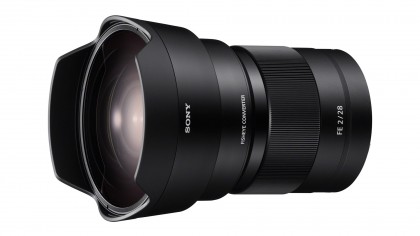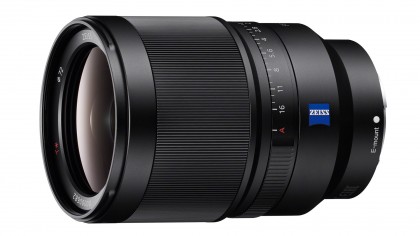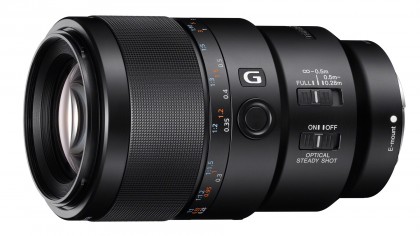Sony announces six new FE lenses for its full-frame CSCs
Full-frame photography isn't just for pro DSLRs any more, as Sony steps up its full-frame lens production

TechRadar has been shown six new full-frame FE mount lenses for Sony's A7-series compact system cameras. Actually, two of these are conversion lenses, but they way they've been designed to work means they deserve to be included in the total.
At the same time, we were treated to some short videos from the Sony lens designers, who work in teams of two – an optical designer and an engineer – and who are clearly rather proud of what they do!
Sony's A7-series full-frame CSCs are well-made, pro-spec cameras capable of first-rate images, and now they're getting a lens range to do them justice. With this latest announcement, Sony practically doubles the range to 13 different lenses.
This could be the key for Sony to break into the professional and serious enthusiast market. There's nothing wrong with its cameras – photographers just need to know there's a varied and high-quality lens range to go with them.
FE 24-240mm F3.5-6.3 OSS (SEL24240)
Sony's first superzoom lens for its full-frame CSCs has a 10x 24-240mm zoom range. The 24mm minimum focal length is wider than average for a lens of this type, where 28mm is the norm, and Sony says the extra angle of view is a major advantage over rival lenses.

The new zoom has a sophisticated construction, with 1 ED and 5 aspheric lens elements. Sony describes the 24-240mm as 'compact and lightweight', though these things are relative and it feels pretty chunky on one of Sony's A7 bodies. Having said that, it's a lot shorter than its chief rival at full zoom.
The autofocus seemed fast and very quiet too, so this could be a neat and practical walkaround lens for A7 users who need to travel light.
Sign up for breaking news, reviews, opinion, top tech deals, and more.
The price is £860 (about US$1320/AU$1690) and Sony says the 24-240mm will be out any time now.
FE 28mm F2 (SEL28F20)
While the 24-240mm superzoom lens has the most impressive specs, the new 28mm f/2.0 is potentially more interesting. It can be used on its own as a fast and compact wideangle prime lens, but you can also attach one of two matching conversion lenses to give either an ultra-wide or a fisheye effect. The camera can recognise the converter that's been fitted and adjust the image's embedded EXIF data automatically.
These conversion lenses mount on the front of the 28mm f/2.0 with a precision-fit 'gapless' connection. The 28mm f/2.0 lens itself will cost £390 (about US$600/AU$770).
SEL075UWC ultra-wide converter
The SEL075UWC ultra-wide converter gives the 28mm lens a 21mm angle of view – a big increase, with the loss of just one f-stop in maximum aperture, down from f/2.0 to f/2.8 – and it will cost just £210 (about US$320/AU$410).

SEL057FEC fisheye converter
The SEL157FEC fisheye converter gives the 28mm f/2.0 lens an angle of view of 180 degrees, a maximum aperture of f/3.5 and costs just £270 (about US$410/AU$530).
Conversion lenses aren't always renowned for their optical quality, but these are designed specifically to match the 28mm f/2.0 lens, and the test prints Sony brought along looked very impressive – and sharp from edge to edge.
What's especially exciting is that it means you can effectively get a fast wideangle lens, an ultra-wide lens and a fisheye for a lot less cash than if you bought three separate conventional lenses. We look forward to reviewing them properly when samples become available.
Zeiss Distagon T* FE 35mm F1.4 ZA (SEL35F14Z)
Sony Zeiss lenses are designed in conjunction with the famous lens maker (though actually made by Sony), and this is the first f/1.4 lens in Sony's full-frame FE lens line-up.

The specs look similar to other fast 35mm lenses, but Sony says the difference lies in the performance. It uses an internal focus system moving a heavy three-lens focus group, which is normally a recipe for slow and noisy autofocus, but Sony has employed a 'Direct Drive SSM' with a ceramic actuator and rubber shock absorption at the ends of the focus travel for quick, quiet and cushioned autofocus.
The Zeiss 35mm f/1.4 is the first Sony FE lens for stills photography with an aperture ring, but there's a switch on the side of the lens to swap between click-stop aperture settings for stills or smooth aperture adjustment for movies.
The 35mm f/1.4 will cost £1450 (about US$2220/AU$2850).
FE 90mm F2.8 Macro G OSS (SEL90M28G)
The sixth and last new lens isn't expected until June 2015 or later. Again, the emphasis is on quality and performance, and this lens has a 'floating' focus system consisting of two focus groups moving independently, and with independent actuators. The enables Sony to adjust each lens at the factory for optimum performance.

Depth of field in macro shots is really shallow regardless of lens aperture, and Sony's designers have paid great attention to the appearance of out-of-focus backgrounds.
The 90mm f/2.8 macro has optical image stabilization built in and a 3-position focus limiter to speed up the autofocus operation when working with subjects further away from the camera.
The Sony 90mm f/2.8 macro will go on sale at £980 (about US$1500/AU$1920).

Rod is an independent photographer and photography journalist with more than 30 years' experience. He's previously worked as Head of Testing for Future’s photography magazines, including Digital Camera, N-Photo, PhotoPlus, Professional Photography, Photography Week and Practical Photoshop, and as Reviews Editor on Digital Camera World.